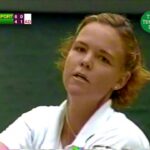About Jigoro Kano
The inventor of Judo, educator, and athlete Kan Jigor (嘉納 治五郎) (; 10 December 1860 – 4 May 1938) is thought to have had a net worth of $1 million. The first Japanese martial art to receive great international acclaim and to be recognized as an official Olympic sport was kango.
“Nothing under the sun is greater than education. By educating one person and sending him into the society of his generation, we make a contribution extending a hundred generations to come.” — Jigoro Kano
Childhood & Family Life
In the latter days of the Tokugawa military regime, Kano was born. Along with this, there was considerable political instability and a great deal of mistrust of the government. Although he was raised by sake brewers in the Japanese village of Mikage, his father, Kan
Adopted son Jirosaku Kireshiba chose not to join the family company. Instead, he was a senior clerk for a shipping line and a lay priest. When Kano was nine years old, his mother passed away, and his father then relocated the family to Tokyo (when he was 11).
Education
Although Kano is most recognized for creating judo, his education and intelligence were not to be laughed at. According to reports, Kano’s father had a great commitment to study and made sure that his son received an education from neo-Confucian intellectuals like Yamamoto Chikuun and Akita Shusetsu. In addition, he received private instruction in English as a kid, attended private schools as a young adult, and in 1874, at the age of 15, was sent to a privately managed school to sharpen his English and German.
Kano was admitted to Toyo Teikoku (Imperial) University, which is now Tokyo University, and entered there in 1877. His admission to such a prominent school was merely another achievement in his academic career.
Interestingly, since Kano’s original notes documenting the art and his participation in it were written in English, his understanding of the language even aided in his documentation of jujitsu studies.
Jujitsu’s Early Years
The introduction of the martial arts to Kano is attributed to Nakai Baisei, a family acquaintance who served in the shogun’s guard. You know, the future inventor of judo was a frail young man who yearned to be stronger. One day, Baisei demonstrated to him how leverage and other techniques in jujitsu or jujutsu may help a smaller man defeat a larger one. Kano was quickly fascinated despite Nakai’s opinion that such training was out of date, and his own father’s request for him to start playing a modern sport instead met with resistance.
Kano started looking for jujitsu instructors in 1877. He began his hunt for “bonesetters,” also known as “seifukushi, since he thought doctors understood who the best martial arts instructors were (some of his academia perhaps coming out). The bonesetter Fukuda Hachinosuke, who instructed Tenjin Shin’yo-ryu, was recommended to Kano by Yagi Teinosuke, who in turn found him. Yoshin-ryu and Shin no Shindo-ryu, two more established jujitsu schools, were combined to create Tenjin Shin’yo-ryu.
Kano first encountered Fukushima Kanekichi, a senior student at the institution, while he was training with Fukuda. He started experimenting with unconventional tactics from other sports like sumo, wrestling, and the like as a preview of the new things to come with Kano. In fact, he finally started benefiting from a wrestling move known as the fireman’s carry. The fireman’s carry-based kataguruma, also known as the shoulder wheel, is still practiced in judo today.
Kano had advanced to the point where, in 1879, he and his teachers took part in a jujitsu display in honor of General Grant, a previous US President. Fukuda passed away at the age of 52 not long after the event. However, Kano was not without a tutor for long as he immediately started learning from Fukuda’s friend Iso. In contrast to Fukuda, Iso frequently started with kata before moving on to free combat or randori. Soon after, Kano was hired as an assistant at Iso’s school. At the age of 21, he was given permission to instruct the Tenjin Shin’yo-ryu system in 1881.
Kano witnessed a Yoshin-ryu jujutsu display while working out with Iso and later engaged in a fight with students from that school. Kano was impressed by those Totsuka Hikosuke was teaching this way. In reality, his experience there assisted him in realizing that, if he kept on with his current course of martial arts education, he might never be able to defeat Totsuka. As a result, he started looking for jujitsu instructors who could provide him with a variety of components to mix. To put it another way, he understood that learning new tactics was the best approach to be able to deal with someone like Tosuka rather than simply training harder.
Iikubo Tsunetoshi trained Kan in Kit-ry after Iso’s passing in 1881. Tsunetoshi’s throwing skills, in Kano’s opinion, were generally superior than those he had previously studied.
the founding of Kodokan Judo
Even though Kano began teaching in the early 1880s, his methods of instruction were not notably different from those of his previous instructors. However, despite the fact that Iikubo Tsunetoshi would initially triumph over him in randori, later events differed, as stated by a comment from Kano in the book “The Secrets of Judo.”
Kano said, “Usually it had been him that threw me,” “He was no longer being thrown; I was now throwing him more frequently. Despite the fact that he belonged to the Kito-ryu school and specialized in throwing techniques, I was nevertheless able to accomplish this. He seemed astonished by this, and he seemed disturbed about it for a time. I had done something extremely strange. But it was the outcome of my research into how to disrupt an opponent’s posture. It was true that I had been researching the issue and how to read the opponent’s movement for a while. But it was here that I made my first sincere attempt to apply the idea of disrupting the opponent’s position before advancing for the throw.”
I explained to Mr. Iikubo about this and that one should use the throw only after the opponent’s posture has been disrupted. He then stated to me, ” “This is accurate. I’m sorry, but I’m at a loss for what else to teach you.
Soon after, I acquired all of his books and school writings and was introduced into the mysteries of Kito-ryu jujutsu “”
Kano switched from teaching other people’s systems to creating, naming, and teaching his own. When he created his own school, the Jikishin-ryu, Terada Kan’emon, one of the headmasters of Kito-ryu, brought a phrase with him (judo). Judo means “the gentle way.” in essence. The Kodokan judo martial art form was named after him. He founded the Kodokan dojo in 1882 with just 12 mats in a room that belonged to a Buddhist temple in Tokyo’s Shitaya district. Although he began with fewer than a dozen students, by 1911 he had more than 1,000 members who had received dan grades.
Jujutsu (the martial art Kano formerly studied) and judo were put to the test in a competition in 1886. (the art that he had in essence invented). This contest was handily won by Kano’s Kodokan judo competitors.
Being both a martial artist and a teacher, Kano perceived the route of his technique as more of a method for developing physical culture and moral character. Along with this, he also wanted judo to be taught in Japanese schools, but not just as a combat style, but as a part of something far larger. To assist in achieving this, he made an effort to eliminate some of jujitsu’s more lethal moves, such as strikes and killing moves. By 1911, judo had mostly been incorporated into Japan’s school system thanks to Kano’s efforts. Judo later became an Olympic sport in 1964, maybe as a tribute to one of the greatest innovators and martial artists of all time.
The man who combined the greatest elements of multiple other jujitsu and combat systems into his method undoubtedly left his mark on the arts, which is still felt powerfully today.
On October 28, 1860, Jigoro Kano was born in Japan’s Hyogo Prefecture. He passed away from pneumonia on May 4, 1938. Jigoro Kano had a $1 million net worth at the time of his passing.
In that his legacy established a completely new set of regulations, Kan has also been compared to the 9th Marquess of Queensberry:
Dr Kano’’s Kodokan rules for his version of jujitsu brought a new, safer kind of fighting to Japan in the same way that the Queensberry Rules, introduced some two decades earlier in 1867, did for boxing in England. Both the Marquess of Queensberry and Dr Kano transformed their sports, making them cleaner and safer. One man took the grappling out of boxing; the other took the boxing out of grappling. One worked with a padded fist; the other with a padded floor. In the latter years of the nineteenth century, the martial histories of eastern and western civilisation had reached a point at which two men at opposite ends of the globe produced, within a few years of each other, the rules which were to herald unarmed combat’s own age of enlightenment.
References
^ Watanabe, Jiichi and Avakian, Lindy. The Secrets of Judo. Rutland, Vermont: Charles E. Tuttle Co., 1960. Retrieved 14 February 2007 from [1] (click on “Thoughts on Training”).
Wikipedia



